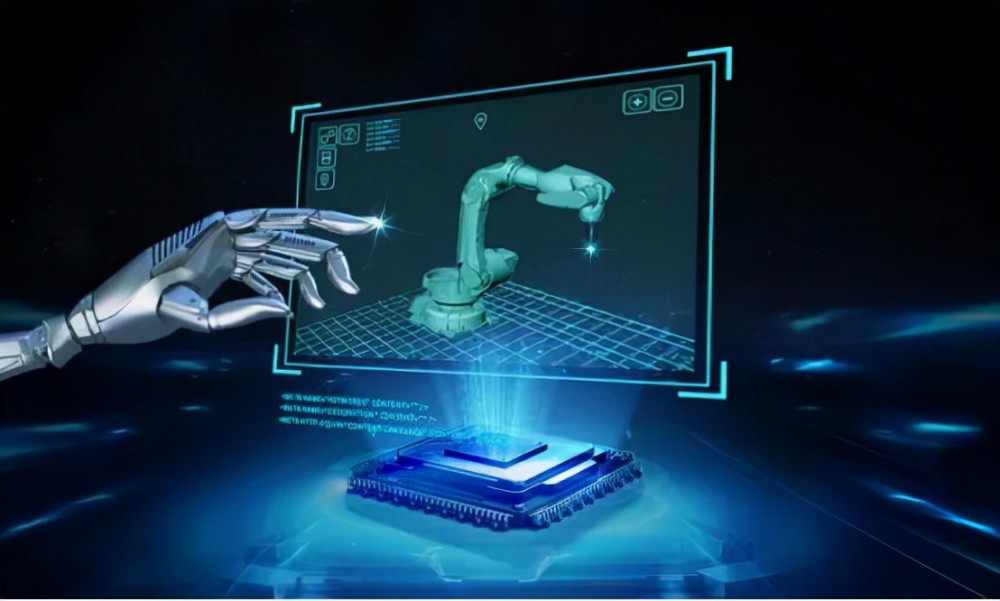Accumulated investment of nearly 20 billion yuan a year, the era of robots to fully replace manual labor is approaching?
Date:2021-10-25
Hello, everyone. We are Chief Digital Officers, and we've been researching industrial digitization for 10 years.
Throughout our extensive work, we've been on a quest to uncover the answer to "How new brands rapidly rise with the help of digital technology."
To achieve this, we've visited numerous renowned companies, engaging with thousands of technology experts, entrepreneurs, and industry leaders to learn how they leverage digital technology to create new business opportunities and develop successful products.
We aim to share these cases illustrating how technology influences business innovation.
Follow us for a daily dose of business cases.
Today, we'll delve into the current state of development in the Chinese robotics industry.

Automation in the global robotics market represents a nearly trillion-dollar opportunity. According to iiMedia Research, global spending on robot process automation continuously increased from 2016 to 2023, reaching $4 billion in 2020. The industry is expected to maintain growth, with projected global spending on robot automation reaching $10.4 billion in 2023.
China's market, seen as a promising gap in this significant opportunity, is gaining attention. A 2021 report on the development of the Chinese robotics industry forecasts a market size of ¥83.9 billion ($13 billion) in 2021, with the industrial robotics market alone reaching ¥44.57 billion ($7 billion).
Industrial robots are considered crucial hardware for reshaping future production and manufacturing in the coming decade. Despite the historical reliance on a labor surplus, the demand for automation is increasing among Chinese enterprises. The shift is driven by the desire to reduce labor costs and maintain efficient production lines, leading to higher returns on investment (ROI).
In 2020, China's robotics industry surpassed ¥100 billion ($15.6 billion) for the first time, with over 300,000 related enterprises nationwide. China's industrial robot market has maintained its global dominance for eight consecutive years, contributing to nearly half of the global installed capacity in 2020.
As of 2021, the capital enthusiasm for industrial robots remains strong, with over 70 financing events and a cumulative funding amount exceeding ¥18.2 billion ($2.8 billion). Notably, 2021 saw peaks in funding events in January, April, and September, with January recording the highest funding amount at over ¥56 billion ($8.7 billion).
Amid the 14th Five-Year Plan, the implementation of the "Make China Strong in Manufacturing" strategy has placed China's industrial automation in a favorable policy environment, presenting unprecedented development opportunities. Favorable policies related to intelligent manufacturing have been introduced, and there are ongoing efforts to establish China as a global hub for robot technology innovation and integration.
With these policy tailwinds, China's industrial robotics sector is entering a period of accelerated growth. In 2020, which was pivotal for the development of Chinese industrial robots, the number of new robotics-related enterprises reached 69,800, the highest in nearly a decade. Facing challenges like an aging population, labor shortages, rising labor costs, and increased precision requirements, Chinese enterprises actively sought automation solutions.
Finally, in 2020, industrial robots began to be widely applied. Facing challenges such as an aging workforce, factory labor shortages, rising labor costs, and increased precision requirements, Chinese enterprises actively sought automation solutions.
In conclusion, the industrial robotics sector in China is experiencing a boom, supported by favorable policies, increasing awareness of the benefits of automation, and continuous capital injection. As China aims to strengthen its position in intelligent manufacturing, the industrial robotics market is expected to remain vibrant in the coming years.
Data sources: IT Orange, Shiye Shuke, Whale Tern, and other data analysis platforms.
As of October 2021, the number and amount of financing events in the industrial robotics sector for the year have already exceeded the total for the entire year of 2020. The number of financing events has grown by 7% compared to 2020, while the total financing amount has increased by 35.2%.
Previous Article: 2023 Collaborative Robot Trends: Strong Momentum in the Chinese Market
Next Article: Robotics Industry Welcomes New Trends